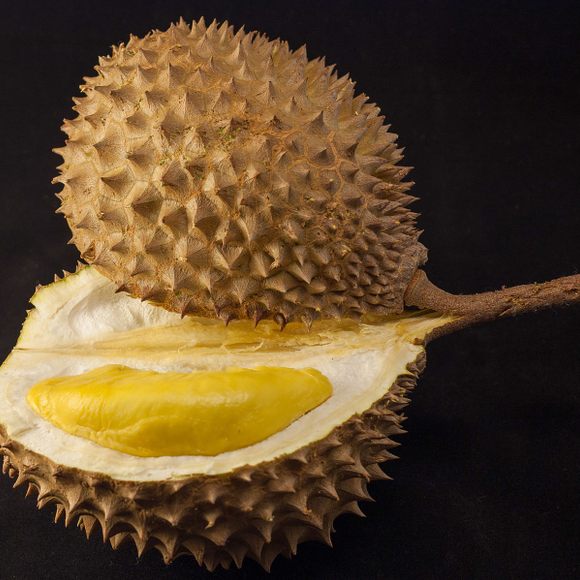What smells like rotting flesh, looks like a prehistoric sea creature, feels like a Medieval torture device, and tastes, in one writer’s words, like “half-solidified whipped cream crossed with a marshmallow”? The one and only Durian. Known as “The King of Fruits,” durians are as adored as they are despised.
In many Southeast Asian countries, law prohibits durians on public transportation, and hotel employees vigilantly sniff out guests who sneak the fruit inside. Its noxious odor, reminiscent of a rotting sweet onion, can be detected from across a room. This, of course, is without opening the watermelon-sized fruit. After consumption, the odor lingers on clothing, people, and tastebuds for hours. Even fans of the polarizing fruit are wary of its powerful scent.
Smell aside, the durian’s high sugar and fat content give it a creamy texture that was historically hard to come by. Because the traditional Southeast Asian diet includes minimal dairy, durian was one of the sweetest, richest treats in its native region of Malaysia. Bakers now use durian in custard, cookies, cheesecake, crepes, and other desserts that benefit from its sweet, creamy texture. Still, eating the raw fruit remains popular. Just don’t take a big whiff before your first bite.
Where to Try It
-
This unassuming stall in Chinatown is a famous spot to buy durian in New York City.
-
Chinatown Ice Cream Factory
65 Bayard Street, New York, New York, 10013, United StatesThis tiny ice cream parlor offers a durian flavor, in addition to other options both classic and hard-to-find.
Written By
 rachelrummel
rachelrummel
Sources
- www.nytimes.com/2013/12/08/travel/a-love-letter-to-a-smelly-fruit.html
- gadling.com/2011/09/08/learning-to-love-durian/
- www.sfgate.com/food/seasonalcook/article/Make-way-for-durian-the-king-of-Thai-fruit-2765660.php
- science.howstuffworks.com/life/genetic/durian-smell-origin-genome.htm
- www.youtube.com/watch?v=wq-Urai-nX4
- www.yearofthedurian.com/2014/10/llegal-durians-how-much-trouble-wi.html
- sea-globe.com/got-milk-demand-dairy-soars-southeast-asia/


















